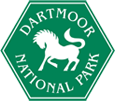Rhos Pasture
Rhôs pastures are enclosed species-rich purple moor-grass and rush pastures. On Dartmoor they are found in valley systems away from the open moor, usually in a mosaic together with wet woodland, other species-rich grasslands and oakwood. Dartmoor has 1,200 hectares of this habitat, representing 20% of the English resource.
What wildlife do they support?
The most distinctive plants of this habitat on Dartmoor are the meadow thistle, devil’s-bit scabious, heath spotted orchid and saw-wort, all colourful plants. They grow in amongst either purple moor-grass or sharp-flowered rush and there may be some creeping willow present. Other plants that can be found include ivy-leaved bellflower, lesser spearwort, marsh thistle, sneezewort, greater bird’s foot trefoil and marsh violet .
Rhôs pasture is home to marbled white butterflies, which can be abundant, small pearl-bordered fritillary and the highly protected marsh fritillary which is found in colonies representing about 20% of the English resource. One of Britain’s rarest damselflies, the southern damselfly, also occurs in a single Rhôs pasture on Dartmoor. The rare narrow-bordered bee hawkmoth, which feeds on devil’s bit scabious can also be found, often in association with marsh fritillary.
Discover more of the Dartmoor Story
Through the Moor than meets the eye Landscape Partnership we are supporting landowners to improve the management of this important habitat. Find out more about the Natural Connections project.


